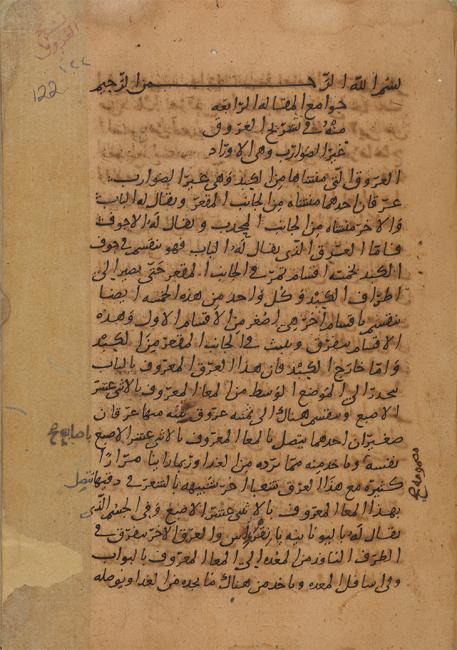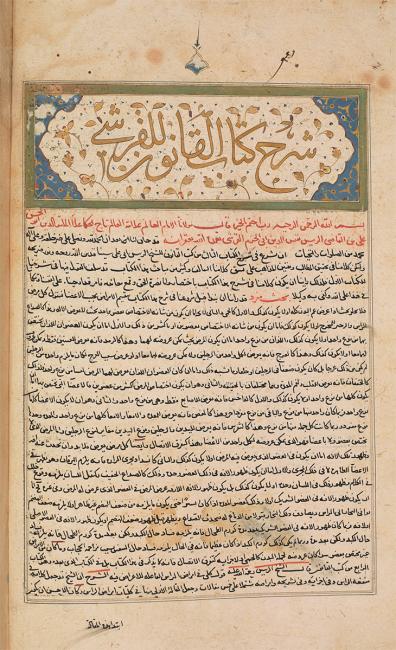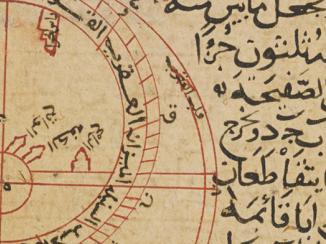Overview
Galenic physiology and anatomy dominated the Arabic medical tradition from the time of Ḥunayn ibn Isḥāq (AD 809–873). Medical authorities such as al-Rāzī (AD 865–c. 925) and al-Majūsī (died AD c. 982–994) innovated and critiqued medical practice, but seldom challenged the underlying principles of the Galenic system. In his Canon of Medicine, Avicenna (AD 980–1037) undertook the first rigorous attempt to align Galenic medicine with a philosophically sound understanding of the nature of the living body, and in so doing modified certain aspects of physiology. This led to Ibn al-Nafīs’ devastating critique and reform of the entire basis of Galenic medicine that laid the foundations for William Harvey’s (AD 1578-1657) theory of blood circulation.
Ibn al-Nafīs’s reforms were the result of two processes: an intensive theoretical study of medicine, physics and theology in order to fully understand the nature of the living body and its soul; and an attempt to verify physiological claims through observation, including dissection of animals.
The Invisible Pores of the Heart
Galen had claimed that the septum (a muscle wall separating the two sides of the heart) is porous, but since he could not see these pores during dissection, he suggested they were so small they were invisible. Ibn al-Nafīs harmonised theory and empirical observation in his proposal that blood travelled from the right side to the left side of the heart via the lungs. This is known as the pulmonary transit.

According to Galen, the veins were responsible for distributing blood and the humours (i.e. nourishment) to the entire body, and the arteries for distributing the vital spirit. This spirit was generated in the left side of the heart from concocted air received from the lungs. The two sets of vessels comprised two distinct systems, each governed by a separate organ, and each possessing its own soul (or part of soul) that gave the necessary powers to its respective organ.
The veins were part of the system of nutrition that was governed by the liver, which received the powers of nourishment from the nutritive soul. The arteries were concerned with distributing the spirit and heat from the heart, which received its powers from the passionate soul. Galen also believed that some less dense parts of the body could not be nourished by the thick blood of the veins. He therefore suggested the existence of invisible pores in the heart’s septum to allow for some blood to mix with the air and spirit found in the left side of the heart, refining the blood enough to nourish these parts of the body.
The Soul Has No Parts: The Septum Has No Pores
On philosophical grounds, Ibn al-Nafīs rejected the claim that the soul (nafs) had parts. Physiologically, he considered the heart responsible for generating the spirit (rūḥ) and introducing movement into the body. He then claimed that the septum could not possess invisible pores, since the thick blood of the veins would then corrupt the fine texture of the spirit, and suggested that the blood from the right side was taken up by the lungs.

In the lungs, some blood was filtered through the two tunics (coverings) of the vessel that brought blood to the lungs from the heart. Ibn al-Nafīs called this vessel the ‘artery-like vein’, but we now call it the pulmonary artery. The filtered blood passed into the open spaces of the lungs, where it mixed with air and was then absorbed by the ‘vein-like artery’ (pulmonary vein). This light, air-blood mixture generated the spirit in the left side of the heart, while the thicker blood remaining in the pulmonary artery nourished the lungs.
This new physiology and anatomy also led Ibn al-Nafīs to reject Galen’s belief that the pulse was caused by a power that resided in the arteries’ tunics, which caused all arteries to contract and expand simultaneously. Instead, he claimed that the pulse was a direct result of the heartbeat, even observing that the arteries contracted and expanded at different times depending upon their distance from the heart. He also correctly identified that the arteries contract when the heart expands, and expand when the heart contracts.
Transit and Circulation
According to Ibn al-Nafīs, the blood was entirely used up during its journey through the body, and only a small part of the blood participated in the pulmonary transit. Yet, the new physiology that supported this anatomical theory was often discussed in later Arabic commentaries on Avicenna’s Canon and Ibn al-Nafīs’s Concise Book on Medicine.
Some of these texts, such as Quṭb al-Dīn al-Shīrāzī’s (AD 1236-1311) Commentary on the Canon, were read in Latin translation by Renaissance anatomists. Realdo Colombo (AD 1519–1559), for example, used anatomical observations to defend theories of the pulmonary transit and of the heart as the cause of the arterial pulse. These two theories then provided the basis for Harvey’s modern theory of blood circulation.

